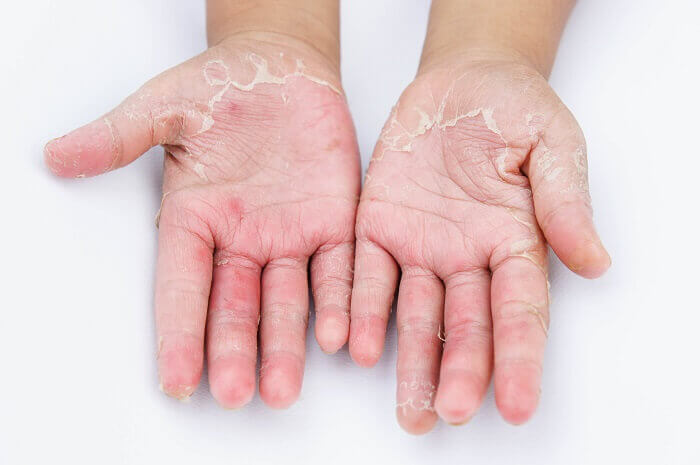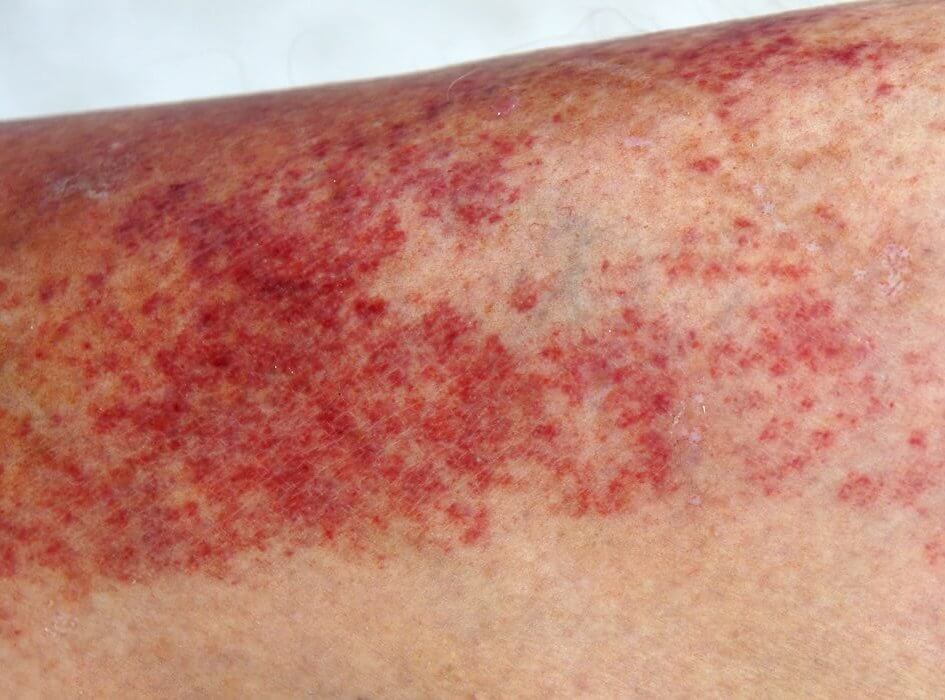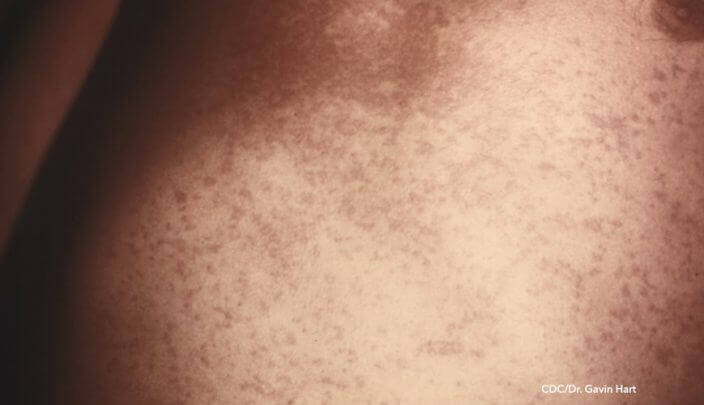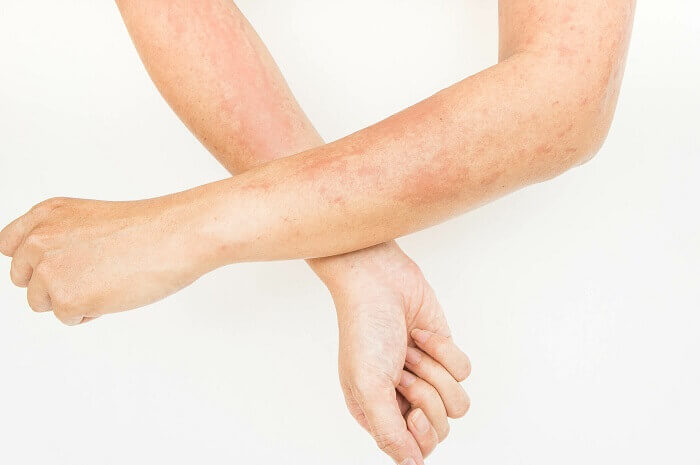Contact Dermatitis Treatments from U.S. Dermatology Partners
Addressing Symptoms of Common Irritant & Allergic Skin Responses
Contact dermatitis is a common skin condition that impacts millions of people. At U.S. Dermatology Partners, we can help patients who struggle with contact dermatitis and other skin conditions to address their symptoms and look and feel their best. You can learn more about contact dermatitis on this page or by scheduling a consultation with a U.S. Dermatology Partners office location in your area.
Find This Service Near You
What is Contact Dermatitis?
Contact dermatitis is a type of skin reaction that occurs when the skin comes into contact with an allergen or when the skin has been physically irritated by repeated contact with a substance that is toxic or abrasive. From perfumes and dyes to plants and chemicals in cleaning products, contact dermatitis can be caused by a wide variety of external irritants and allergens. The good news is that contact dermatitis, while it can look and feel bad, is not life-threatening or contagious. Contact dermatitis is typically treated by identifying the allergen or irritant so that it can be avoided and using medications to reduce the inflammation.
Are There Different Types of Contact Dermatitis?
There are actually two different types of contact dermatitis – irritant and allergic dermatitis.
Irritant Dermatitis
The most common type of contact dermatitis is caused by irritants. Unlike allergic dermatitis, which is caused by a skin allergy that only impacts specific people, irritant dermatitis can affect anyone. It occurs when a non-allergen substance damages the outer layers of skin, leading to irritation, inflammation, and itching.
A strong irritant can damage the skin after one exposure, but contact dermatitis often occurs due to prolonged or repeated exposure.
Almost any abrasive, acidic, or rough substance can cause irritant dermatitis, but the following substances frequently lead to irritation:
- Cleaning chemicals – including bleach and detergent
- Rubbing alcohol
- Solvents
- Dyes
- Perfumes
- Haircare products or treatments and hair dyes
- Plants
- Fertilizers
- Pesticides and bug repellants
- Sawdust
Allergic Contact Dermatitis
This form of dermatitis occurs when the skin is exposed to a substance that the patient is allergic to. These allergens cause the immune system to kick into high gear, causing inflammation, irritation, itching, and other symptoms similar to irritant contact dermatitis. While contact dermatitis is typically caused by contact with the skin, allergic contact dermatitis may also develop due to an allergen that is consumed or placed inside the body as part of medical or dental treatments. This is often referred to as systemic contact dermatitis. Like irritant dermatitis, strong allergens can cause a response after minimal exposure, but other substances only cause a response after prolonged or repeated exposure.
People can develop allergies to just about any substance, but some of the most common skin allergens include:
- Poison ivy, oak, and sumac
- Metals, especially nickel which is commonly used in jewelry and clothing fasteners
- Topical medications like antibiotic or steroid creams
- Latex and rubber
- Certain perfumes and dyes in cosmetics, deodorants, and hygiene products
- Preservatives in cleaning products
- Airborne allergens like pollen and dander
Who Develops Contact Dermatitis?
Almost anyone can develop irritant or allergic contact dermatitis, but there are some professions and pastimes that put people at greater risk, including:
- Hairdressers and cosmetologists who regularly handle chemicals and cosmetic products
- Mechanics who come in contact with irritants and allergens regularly
- Construction workers often use solvents and chemicals as well as handling abrasive materials
- Metalworkers who can be exposed to heat and other chemicals and irritants
- Scuba divers and others who wear face masks and goggles
- Professional cleaners, including dry cleaners, who handle chemicals daily
- Healthcare industry employees who handle chemicals, solvents, metals, and latex regularly
- People who work outdoors, including gardeners, farmers, and horticulturists
What Are the Symptoms of Contact Dermatitis?
Contact dermatitis usually causes an itchy rash on the skin. Some of the most common symptoms include:
- Rash or hives
- Itching
- Blisters
- Inflammation and swelling
- Burning or stinging
- Dry or cracked skin
- Thickened, scaly skin
Some of the more severe symptoms of contact dermatitis include:
- Itching so intense it’s distracting or interrupts sleep
- Severe pain that increases rather than improving with time
- Rash covering a large part of the body, especially if it’s affecting the face as this can lead to difficulty breathing or swallowing
- The rash develops on the genitals, which increases the risk of infection
- You have a fever, sores with drainage, or other signs of infection
If you experience symptoms of contact dermatitis, you should contact a board-certified dermatologist. They are specially trained to identify the cause and alleviate the symptoms.
What Treatments Are Available for Contact Dermatitis?
The first step to treat contact dermatitis is simple – identify and avoid the allergen or irritant causing the reaction. At home, you can address allergy symptoms by applying a cold compress and anti-itch cream to the affected area, and you can take over-the-counter antihistamines to counter the allergic response. It’s important not to scratch the irritated skin since this increases the risk for infection. You can also soak in a cool bath with baking soda or colloidal oatmeal to relieve itch. If you avoid the cause of your contact dermatitis and treat the symptoms, the condition should improve in a few weeks.
If your condition doesn’t improve or you can’t determine the source of your reaction, you should visit a dermatologist. Your dermatologist may recommend an allergy patch test to help determine potential allergens. They will also ask you to keep track of any potential allergens or irritants.
As you work to identify the cause of your contact dermatitis, your doctor may recommend the following steps to treat contact dermatitis:
- Topical steroids applied directly to the affected area to soothe the itch
- Oral corticosteroids to reduce inflammation
- Oral antihistamines to relieve itch
- Oral antibiotics to fight infection
Can Contact Dermatitis Be Prevented?
Prevention is an essential aspect of treatment for contact dermatitis. Pinpointing and avoiding the source of your contact dermatitis should be the first step in your treatment plan.
Additionally, you can take the following steps to prevent contact dermatitis:
- Keep skin clean, especially after being exposed to chemicals, allergens, and other potentially irritating substances
- Wear protective gear when handling chemicals and potentially damaging substances
- Cover metal fasteners and clasps that touch the skin with fabric
- Use barrier creams before exposure to minimize or prevent the effects of allergens and irritants
- Keep your outdoor pets clean as allergens and irritants can stay trapped in their fur and transfer onto your skin
- Follow an appropriate skincare routine as instructed by your dermatologist to keep skin healthy
*Results may vary by individual





